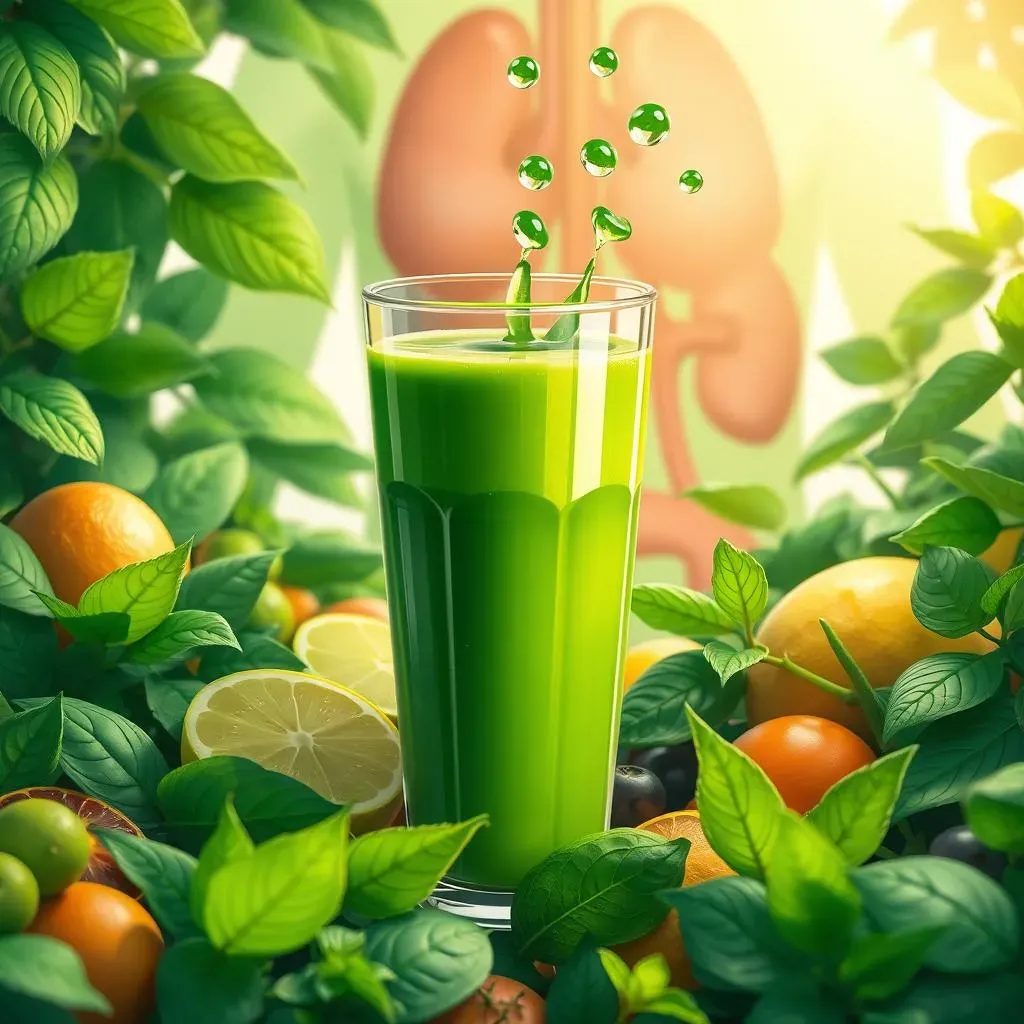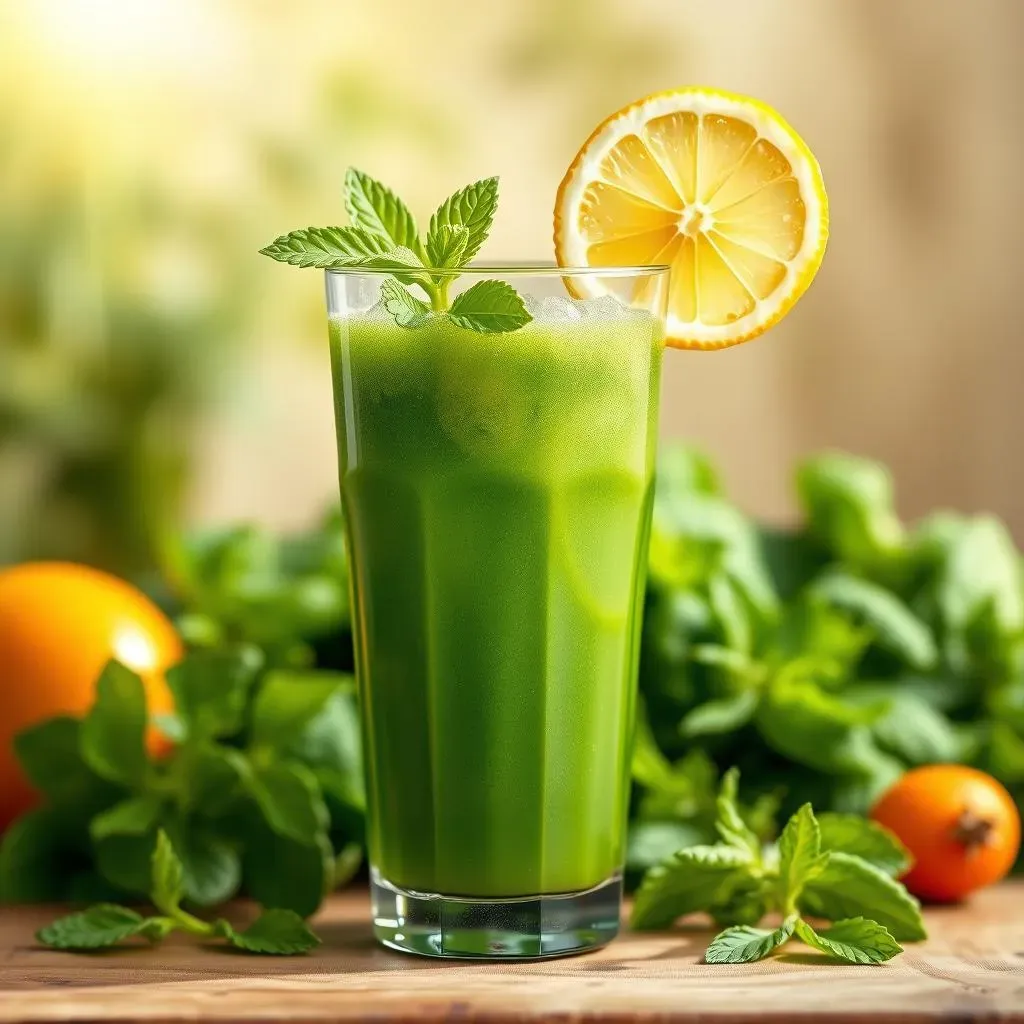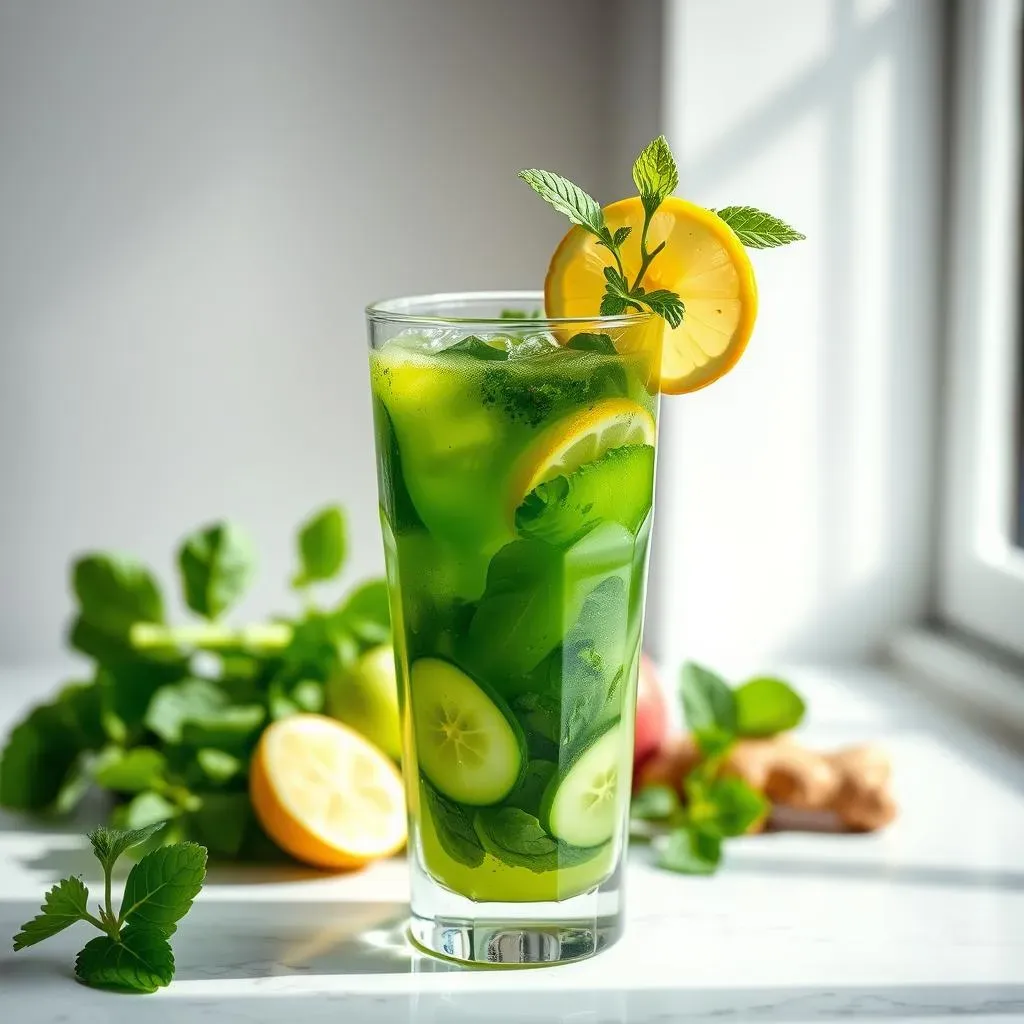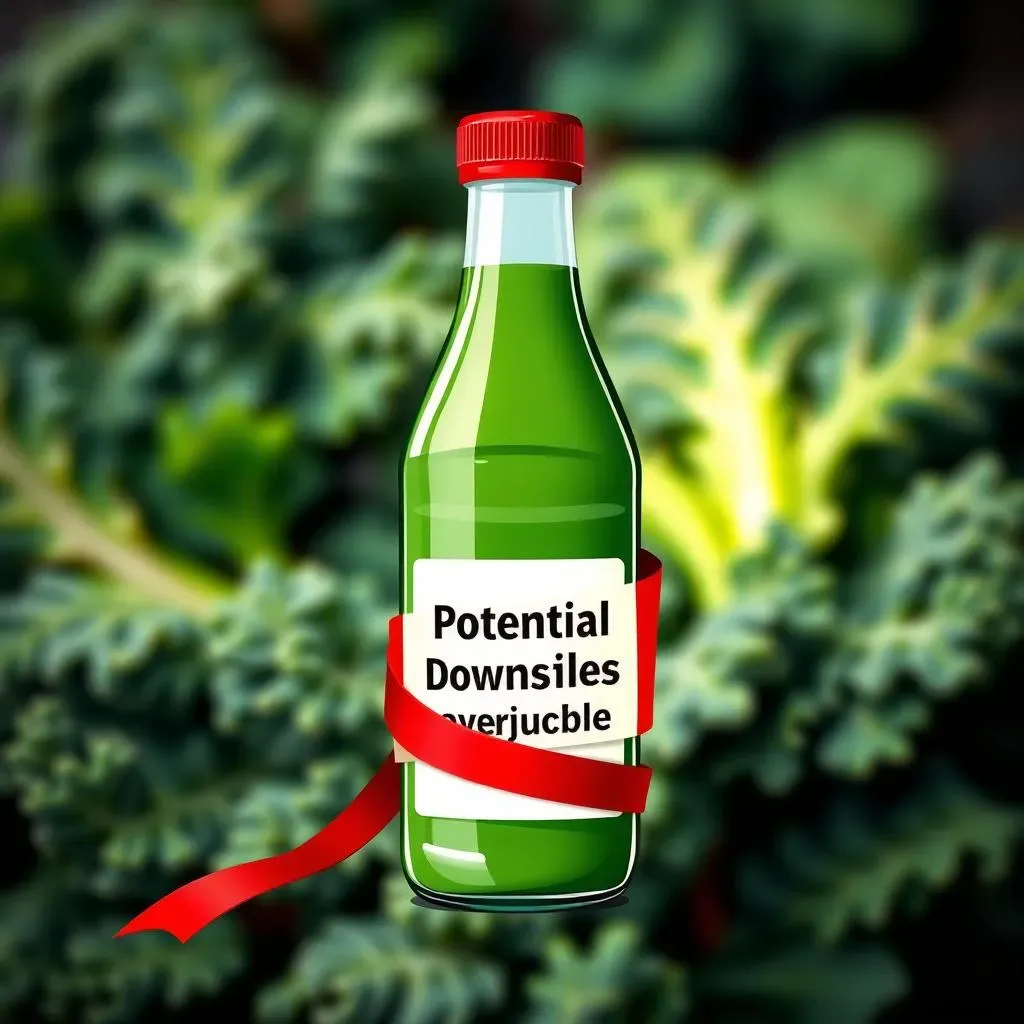Table of Contents
In a world saturated with detox fads and quick-fix solutions, it's easy to get lost in the noise. But what if there was a simple, accessible way to support your body's natural cleansing processes? Enter green juice. This vibrant elixir has gained immense popularity, touted for its ability to revitalize, energize, and, yes, detoxify. But what does green juice detox actually entail? Is it just another fleeting trend, or is there real substance behind the hype?
What Does Green Juice Detox Actually Do? Unveiling the Truth

What Does Green Juice Detox Actually Do? Unveiling the Truth
let's get real about what does green juice detox actually do. The term "detox" gets thrown around a lot, often implying some magical process where toxins are instantly flushed from your system. The truth is, your body has its own incredible detoxification system already in place: your liver, kidneys, and digestive tract. Green juice primarily supports these organs by providing them with a concentrated dose of nutrients. Think of it less as a "detox" and more as a nutrient boost that helps your body function optimally.
When you flood your system with vitamins, minerals, and antioxidants from leafy greens, vegetables, and fruits, you're essentially giving your body the raw materials it needs to perform its natural detox processes more efficiently. For example, ingredients like cilantro and parsley are known for their chelating properties, which means they can help bind to heavy metals and facilitate their removal from the body. However, it's crucial to remember that green juice is not a substitute for a healthy lifestyle. It's a supplement to a balanced diet, regular exercise, and adequate hydration.
Benefits of Green Juice: Beyond the Detox Hype

Benefits of Green Juice: Beyond the Detox Hype
Nutrient Powerhouse
Let's move past the "detox" buzzword and talk about the real benefits of green juice. Think of it as a concentrated shot of vitamins and minerals. We're talking Vitamin A, Vitamin C, Vitamin K, folate, potassium – the list goes on! These nutrients are essential for everything from immune function and energy production to healthy skin and strong bones. It's like giving your body a supercharged multivitamin, straight from nature.
Unlike processed supplements, green juice provides these nutrients in a readily absorbable form. Your body can easily recognize and utilize the vitamins and minerals from whole foods, maximizing their impact. This is particularly beneficial for people who struggle to eat enough fruits and vegetables daily. A glass of green juice can be a convenient and efficient way to bridge that nutritional gap.
Hydration Hero
Beyond the vitamins and minerals, green juice is incredibly hydrating. Most green juice recipes are water-based, using ingredients like cucumber, celery, and lettuce, which have high water content. Proper hydration is crucial for overall health, impacting everything from digestion and circulation to cognitive function. Many people walk around chronically dehydrated without even realizing it. Adding green juice to your routine is a simple way to boost your fluid intake and stay properly hydrated throughout the day.
Dehydration can manifest in various ways, including fatigue, headaches, and digestive issues. By staying adequately hydrated with green juice, you can improve your energy levels, support healthy digestion, and enhance your overall well-being. Plus, the added electrolytes from the vegetables can further enhance hydration, making it a superior choice to plain water, especially after a workout or during hot weather.
Benefit | Description |
|---|---|
Nutrient Boost | Concentrated source of vitamins and minerals. |
Hydration | High water content aids in staying hydrated. |
Energy | Improves energy levels through better nutrient intake. |
Digestive Support
Green juice can also be a fantastic aid for digestion. The fiber in whole fruits and vegetables is essential for gut health, but juicing removes most of the insoluble fiber, making the nutrients easier to absorb. This can be particularly helpful for individuals with digestive issues like bloating or irritable bowel syndrome (IBS), who may find it difficult to tolerate large amounts of raw vegetables.
While juicing removes insoluble fiber, it still retains some soluble fiber, which acts as a prebiotic, feeding the beneficial bacteria in your gut. A healthy gut microbiome is crucial for overall health, impacting everything from immune function to mental well-being. By supporting your gut health with green juice, you can improve digestion, reduce inflammation, and boost your overall health.
DIY Green Juice Recipes for a Gentle Detox

DIY Green Juice Recipes for a Gentle Detox
The Basic Green Goodness
Alright, let's get to the fun part – making your own green juice! You don't need fancy equipment or complicated recipes to experience the benefits of green juice. A simple blend of leafy greens, a bit of fruit for sweetness, and some hydrating veggies can do wonders. A great starting point is a mix of spinach, cucumber, green apple, lemon, and ginger. This combination provides a good balance of nutrients, hydration, and flavor. Feel free to adjust the ratios to suit your taste preferences – more apple for sweetness, more ginger for a kick.
When it comes to making the juice, you have two main options: a juicer or a blender. A juicer extracts the juice from the fruits and vegetables, leaving behind the pulp. This results in a smoother, less fibrous juice that is easier to digest. A blender, on the other hand, blends the entire fruit or vegetable, including the pulp. This results in a thicker, more fibrous juice that can be more filling. If you're using a blender, you'll likely need to add some water to help it blend smoothly, and you may want to strain the juice through a nut milk bag to remove some of the pulp.
Beyond the Basics: Level Up Your Green Juice
Once you've mastered the basic green juice recipe, it's time to get creative! There are endless ways to customize your juice to target specific health goals or simply add variety to your diet. For example, if you're looking for an extra boost of antioxidants, try adding berries like blueberries or raspberries. If you want to support liver detoxification, consider adding dandelion greens or milk thistle. And if you're feeling adventurous, try adding a pinch of cayenne pepper for a metabolism boost.
Another way to level up your green juice is to incorporate superfoods like spirulina, chlorella, or wheatgrass. These nutrient-dense ingredients can provide an extra dose of vitamins, minerals, and antioxidants. However, it's important to start with a small amount, as some people may experience digestive discomfort when first introducing these ingredients into their diet. Remember, the goal is to create a green juice that you enjoy and that supports your overall health and well-being. Listen to your body and adjust the ingredients and amounts accordingly.
Ingredient | Benefit |
|---|---|
Spinach | Rich in vitamins A and K |
Cucumber | Hydrating and low in calories |
Ginger | Anti-inflammatory and aids digestion |
Potential Downsides and Precautions of Green Juice Detox

Potential Downsides and Precautions of Green Juice Detox
Oxalate Overload: Kidney Concerns
Alright, let's talk about the less glamorous side of green juice. While green juice detox can be beneficial, it's not without its potential drawbacks. One of the biggest concerns is oxalate overload. Leafy greens like spinach, kale, and Swiss chard are high in oxalates, which are naturally occurring compounds that can bind to calcium and form crystals. In most people, these crystals are harmlessly excreted in the urine. However, in susceptible individuals, high oxalate intake can lead to kidney stones or other kidney problems.
If you have a history of kidney stones or kidney disease, it's crucial to be cautious with green juice. You might want to limit your intake of high-oxalate greens or opt for lower-oxalate alternatives like lettuce, cucumber, and celery. It's also essential to stay well-hydrated, as this can help dilute the oxalate concentration in your urine and reduce the risk of crystal formation. Consider consulting with a healthcare professional or registered dietitian to determine a safe level of green juice consumption for your individual needs.
Blood Sugar Spikes: Fruit Frenzy
Another potential downside of green juice detox is the risk of blood sugar spikes. While green juice is primarily made from vegetables, many recipes include fruit to improve the taste. However, fruit contains natural sugars, which can cause a rapid rise in blood sugar levels, especially when consumed in liquid form. This can be problematic for individuals with diabetes, insulin resistance, or other blood sugar control issues.
To mitigate this risk, it's essential to be mindful of the amount and type of fruit you add to your green juice. Opt for low-glycemic fruits like green apples, berries, or lemons, and limit the overall quantity. You can also balance the sweetness with more vegetables and healthy fats, such as avocado or coconut oil, which can help slow down the absorption of sugar into the bloodstream. Monitoring your blood sugar levels after consuming green juice can also provide valuable insights into how your body responds.
Fiber Deficiency: Digestive Distress
Finally, it's important to consider the potential for fiber deficiency with green juice detox. While green juice is packed with vitamins and minerals, it lacks the insoluble fiber found in whole fruits and vegetables. Fiber is crucial for digestive health, promoting regular bowel movements, preventing constipation, and feeding the beneficial bacteria in your gut. Removing the fiber during juicing can disrupt these processes and lead to digestive discomfort.
To combat this, it's essential to ensure you're getting enough fiber from other sources in your diet, such as whole grains, legumes, nuts, seeds, and plenty of whole fruits and vegetables. You can also consider adding the pulp back into your green juice or using a blender instead of a juicer to retain some of the fiber. Remember, green juice should be a supplement to a balanced diet, not a replacement for whole foods. Prioritizing whole, unprocessed foods is the best way to support your overall health and well-being.
Potential Downside | Precaution |
|---|---|
Oxalate Overload | Limit high-oxalate greens, stay hydrated. |
Blood Sugar Spikes | Use low-glycemic fruits, balance with vegetables. |
Fiber Deficiency | Ensure adequate fiber intake from other sources. |
The Final Sip: Is a Green Juice Detox Right for You?
Ultimately, the question of "what does green juice detox" comes down to understanding its role as a supportive tool, not a magical cure-all. While green juice can undoubtedly contribute to your overall well-being by providing a concentrated dose of nutrients and antioxidants, it's most effective when combined with a balanced diet, regular exercise, and mindful lifestyle choices. Listen to your body, experiment with different recipes, and be wary of extreme or restrictive detox programs. If you have any underlying health conditions or concerns, consult with a healthcare professional before embarking on a green juice detox. When approached with knowledge and moderation, green juice can be a delicious and beneficial addition to your journey towards a healthier, more vibrant you.